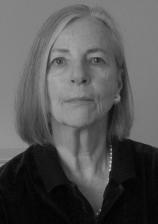The Double Life of Liliane
Review
The Double Life of Liliane
Lily Tuck’s previous fiction, including her National Book Award-winning THE NEWS FROM PARAGUAY, has been praised for its clarity of prose, insight into characters, and elegant explorations of universal themes. She’s also written two collections of short stories as well as a biography of Elsa Morante, a significant Italian writer of the early 20th century. All these elements serve Tuck very well as she crafts her latest work, THE DOUBLE LIFE OF LILIANE, an evocative blend of memoir, history and fiction.
Everything in THE DOUBLE LIFE OF LILIANE, which traces the childhood and young adulthood of its title character, leads up to the course on French poetry that Liliane takes at Harvard with the literary critic Paul de Man. Liliane is the only undergraduate in the course and one of the few women (uncoincidentally, a 2014 biography of Paul de Man was titled THE DOUBLE LIFE OF PAUL DE MAN). De Man poses a series of questions to his students: “How does one distinguish literary language from ordinary language? And when does journalism become literature and when does memoir become literary?”
"...an evocative blend of memoir, history and fiction.... The specter of the war and particularly of the Holocaust runs throughout THE DOUBLE LIFE OF LILIANE.... Although the narrator maintains a quite deliberate emotional detachment from these events, the cumulative effect is one of melancholy, of losses both distant and more closely held."
These questions are also at the heart of Tuck’s narrative, which seamlessly blends a literary narrative structure with a memoir-like personal narrative based on details from her own life (although recounted in the third person) and the techniques of journalism. And the whole story is told in an almost clinically dispassionate tone, more like a history book than a novel. Events in Liliane’s life --- even quite disruptive ones such as her father’s death or her mother’s overdose on sleeping pills --- are narrated matter-of-factly, interwoven with research, family history or science.
The first half of the book is largely composed of meditations on the various twisted branches of Liliane’s family tree, her connections to predecessors as various as the monarch Mary Queen of Scots and the Jewish scholar Moses Mendelssohn. Liliane herself was born in the late 1930s and spent much of her childhood on the move, fleeing her childhood home in Paris at the start of World War II and finally dividing her time as a teenager between her mother and stepfather’s home in New York City and Italy, where her father was a film producer.
The specter of the war and particularly of the Holocaust runs throughout THE DOUBLE LIFE OF LILIANE. References to tragedies large and small run through its pages, too, often in the form of flash-forwards to incidental characters’ tragic and often violent deaths. Although the narrator maintains a quite deliberate emotional detachment from these events, the cumulative effect is one of melancholy, of losses both distant and more closely held.
On the surface, one might expect that the book’s title refers to Liliane’s feeling of being split in two by virtue of spending two very different childhoods, one with her father in Italy and one with her mother in New York and Maine. But again, that pivotal course with Paul de Man, which culminates the book, hints at a different meaning for the title, referring to “the writing ‘I’ and the written ‘I’”. Is the writer identical to her subject? Or, by virtue of narrating her experience and everything that ripples out from it, is she creating a different version of herself? These kinds of provocative questions will preoccupy readers both while they immerse themselves in Liliane’s story and long afterwards.
Reviewed by Norah Piehl on September 18, 2015
The Double Life of Liliane
- Publication Date: September 13, 2016
- Genres: Fiction
- Paperback: 256 pages
- Publisher: Grove Press
- ISBN-10: 0802125506
- ISBN-13: 9780802125507





